Getting A Loan

0%
Loans are great tools for your financial journey.
Learn more about the Government of Canada Personal Loan Resources
Applying for a loan is a great step in your financial journey. Loans are often required for many things like education, buying a car, buying a home, and more. Most lenders (banks and credit unions) will require you to have some sort of credit score established before approving your loan application. They will also most likely require proof of income for the past one or two years. The lenders will also take your credit score into consideration. A great way to establish credit in Canada is by applying for a credit card.
Think of applying for a credit card as the first step, and a loan or line of credit as the next. While loans can be a necessity, it is important to know exactly what the commitment you are making is. The videos below do an excellent job explaining all the different vocabulary surrounding personal loans, explaining how loans work, and giving some tips for applying.
Lines of Credit
Lines of credit (LOC) are a different borrowing product offered by most financial institutions. They are still loans, but they act more similarly to credit cards with more flexibility. Lenders will approve you for a certain amount of credit, and you can draw from this amount as you please. Interest is calculated on the borrowed amount daily and charged at the end of the month. The interest rate for lines of credit is based on the lending institution’s “lending rate” in combination with your personal credit score. You will have a minimum monthly payment based on the amount borrowed each month (similar to a credit card).
A line of credit does differ from a credit card because you can withdraw cash from them without any interest penalties (you should always avoid taking cash advances off your credit cards as the interest penalties are quite harsh). Lines of credit can be linked to your debit card for easy access. They are great for more flexible needs and larger purchases like home renovations. Most institutions offer student lines of credit to finance educational expenses while in your study period. Lines of credit are considered non-secure products unless they are secured against your home. This is called a home-equity line of credit (HELOC).
Auto-Loans
While it is possible to apply for an auto loan directly with your financial institution and get pre-approval, most dealerships will find the financing for you. Some dealerships have one or two financial institutions they use or many. You will need the same documentation discussed above for the financing appointment at the car dealership, and a credit check will be required.
Microloans
Tips and Best Practices for Loan Appointments
1. Assess your financial situation
A loan may look like a lifesaver in a sticky situation, but it is important to weigh the cost of borrowing before making a commitment. Create a budget and assess if a loan is going to help you on your financial journey. Ask yourself if there is room in the budget to dedicate to a loan payment each month.
2. Have all your documentation prepared
• Proof of income: Paystubs (2-3 recent), T4 (proof of total income from last year’s taxes), Notice of Assessment (document provided to you after filing income taxes). *If you don’t have a physical copy of your NOA, you can find it on CRA My Account for individuals
• Government-issued photo identification (2 pieces is best)
3. Do your research
Use the internet to research what products your financial institution offers. Many have loan calculators right on their websites to provide you with an estimate on the cost of borrowing. Look up their current lending rate. This is public information, and it allows you to compare with other lenders.
4. ASK QUESTIONS
Appointments are the opportunity for you to gain clarification. Do not sign paperwork if you are unsure or uncomfortable. It is the responsibility of lenders and dealerships to provide you with full transparent information. Read all paperwork before signing, do not feel rushed. Committing to paying a loan is a big responsibility. When purchasing a vehicle, it is possible to negotiate the monthly payment and get it to a place you are comfortable.
5. Keep and Store these documents in a safe place
Make sure you receive copies of all documents and agreements for your records. Consider a filing system/folder that is accessible and organized
Tags: loan, financing, interest, borrowing, financial planning, car loans, auto loans, lines of credit
RELATED ARTICLES
| M | T | W | T | F | S | S |
|---|---|---|---|---|---|---|
| 1 | 2 | 3 | 4 | |||
| 5 | 6 | 7 | 8 | 9 | 10 | 11 |
| 12 | 13 | 14 | 15 | 16 | 17 | 18 |
| 19 | 20 | 21 | 22 | 23 | 24 | 25 |
| 26 | 27 | 28 | 29 | 30 | 31 | |
Recent Posts
- Local Immigration Partnership Renfrew and Lanark Counties launch online survey
- CULTURE CONNECT: Local Immigration Partnership and United Way East Ontario secure funding for New Horizons Program
- Pathways – Immigration to Canada
- Almonte resident George Yaremchuk presented with Culture Connector Award
- Inspiring Journey: How an international student from India’s experience in Pembroke is shaping her life and career





Recent Comments